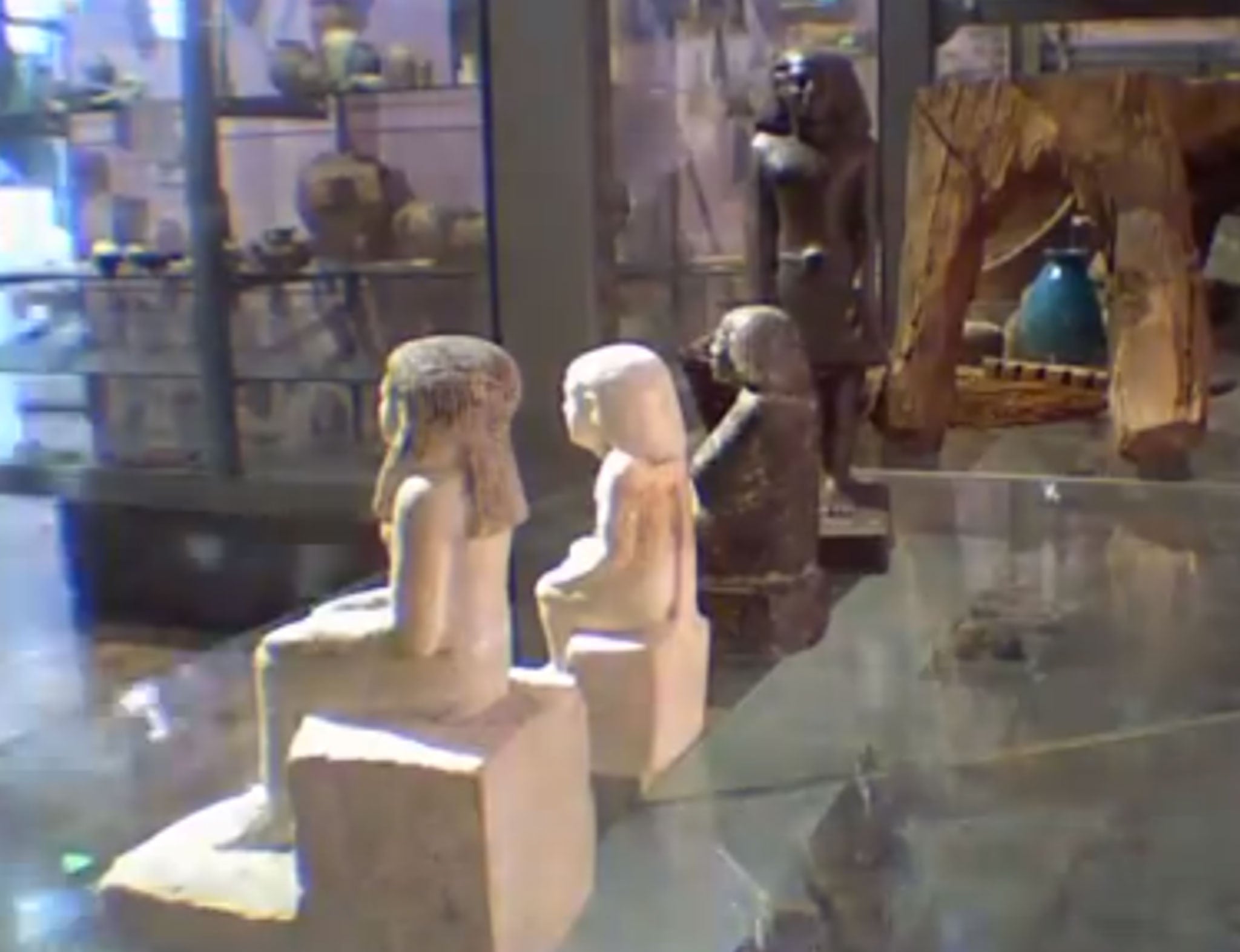Riddle of rotating Egyptian statue in Manchester museum solved
VIDEO: The statue, of a man called Neb-Sanu, appeared to turn itself during the day

Your support helps us to tell the story
From reproductive rights to climate change to Big Tech, The Independent is on the ground when the story is developing. Whether it's investigating the financials of Elon Musk's pro-Trump PAC or producing our latest documentary, 'The A Word', which shines a light on the American women fighting for reproductive rights, we know how important it is to parse out the facts from the messaging.
At such a critical moment in US history, we need reporters on the ground. Your donation allows us to keep sending journalists to speak to both sides of the story.
The Independent is trusted by Americans across the entire political spectrum. And unlike many other quality news outlets, we choose not to lock Americans out of our reporting and analysis with paywalls. We believe quality journalism should be available to everyone, paid for by those who can afford it.
Your support makes all the difference.An ancient Egyptian statue which sparked whispers of an ancient curse when it was found to be turning on its axis inside its display case at a museum wasn't cursed after all, a TV mystery solver has claimed.
An expert from a new ITV show says his evidence of external vibrations turning the 10-inch tall statue "is conclusive."
Bosses at Manchester Museum were puzzled by the statuette which - a video showed - seemed to spin itself through 180 degrees without anyone touching it.
The 10-inch tall statue of Neb-Sanu, which dates back nearly 4,000 years and was found in a mummy’s tomb, has been at the Museum for eighty years. The time-lapse video showed it turning during the day, apparently of its own volition. During the night, however, it remained still.
At the time Campbell Price, an Egyptologist at the museum, suggested the museum may have been struck by ancient curse, telling the Manchester Evening News: "I noticed one day that it had turned around. I thought it was strange because it is in a case and I am the only one who has a key.
“I put it back but then the next day it had moved again. We set up a time-lapse video and, although the naked eye can’t see it, you can clearly see it rotate on the film. The statuette is something that used to go in the tomb along with the mummy.
“In ancient Egypt they believed that if the mummy is destroyed then the statuette can act as an alternative vessel for the spirit. Maybe that is what is causing the movement.”.
The video sparked fevered debate. One Independent.co.uk reader commented: "Maybe it's due to some sort of magnetic force. Is it pointing somewhere? Like it's original tomb?"
And another - cynically, some might say - wrote: "I have a simple explanation. The curator opens the cabinet and turns it a little every once in a while.
"Once recorded by time lapse, it's a simple matter to go through the video and edit out the frames where he appears, giving the illusion that it turns all by itself."
Professor Brian Cox, who teaches physics at the university, gave a more worldly explanation. Mr Price said: “Brian thinks it’s differential friction, where two surfaces - the serpentine stone of the statuette and glass shelf it is on - cause a subtle vibration which is making the statuette turn."
And now ITV's Mystery Map programme claims to have solved the conundrum, backing Prof Cox's explanation. Their expert Steve Gosling put three-axis vibration sensors under the cabinet, and found a peak vibration level - coinciding with movement from passers-by and traffic from the very busy Oxford Road nearby.
He said: "The vibration is a combination of multiple sources so there's buses outside on the busy road, there's footfall activity. And it's all of those things combined.
"This statue has a convex base. There's a lump at the bottom which makes it more susceptible to vibrations than the others which have a flat base.
"This is conclusive."
Writing on his blog about the "quite incredible" reaction he got to the video, posted online in June, Mr Price sounded a note of caution about the effect the storm had on perceptions of Egyptology.
He said: "There has been an understandable concern that the worldwide media attention of the ‘spinning statuette’ has reinforced tired ideas of ancient Egypt being weird, mysterious and spooky.
"These ideas are still deeply ingrained in modern culture and the museum has attempted – as we have done for other topics – to challenge these through explanations of (equally interesting) Pharaonic beliefs and practices."
But he said that if the storm causes a few people to visit the museum and learn about ancient Egypt who otherwise wouldn't have, then the flurry of attention had been worthwhile.
And Neb-Sanu's spinning days have come to an end, Mr Price said, adding: "A conservation-grade membrane has now been affixed to the base of this and other objects to prevent movement in future."
Join our commenting forum
Join thought-provoking conversations, follow other Independent readers and see their replies
Comments